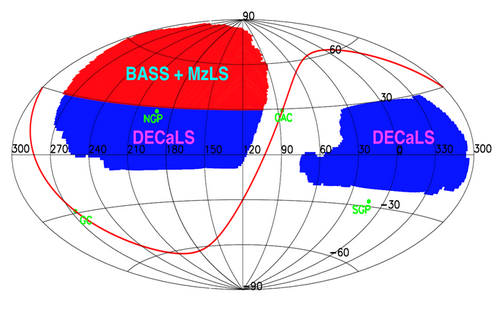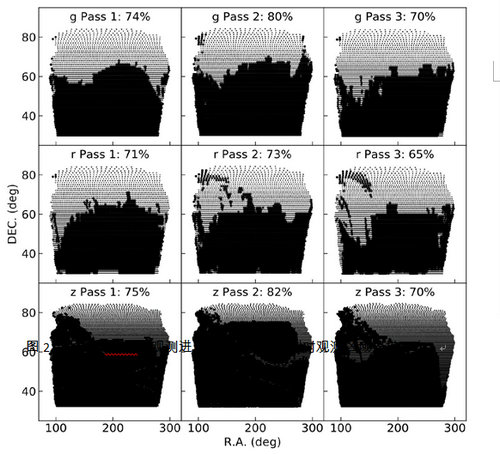
After the first data release (DR1) was published in January 2017, Beijing-Arizona Sky Survey (BASS) has obtained new observed data and updated the data processing software recently. The second data release (DR2) is now available to the public. It is the first time to include the z-band observations taken by a US team. The BASS data is open to astronomers all over the world.
BASS is a collaborative project of NAOC and University of Arizona (UA) led by Prof. ZHOU Xu and ZOU Hu from NAOC and Prof. FAN Xiaohui from UA. The project plans to use the 2.3-meter Bok telescope to cover an area of 5500 square degrees in the north Galactic plane with g and r bands in three to four years.
BASS, together with DECaLS and MzLS (two projects led by the US) will provide photometric catalogs for spectroscopic target selections of the upcoming Dark Energy Spectroscopic Instrument (DESI). MzLS covers the same area as the BASS and provides z-band images.
After three-year (2015-2017) observation, BASS has completed about 72% observation with the total observing nights of over 250. Another 100 nights are needed to finish all the observations and the depth of all observed areas should meet the fixed requirements (g=24 and r=23.4 mags).
MzLS completed about 76% of its survey in 2016 and 2017 with the help of the 4-meter Mayall telescope from National Optical Astronomy Observatory (NOAO) of the US. The survey will complete the rest observations before February 2018, and the desired depth is 23 mags.
BASS published the early data and DR1 in December 2015 and January 2017 respectively. In June 2017, BASS data was merged into DESI imaging products, which is prepared for future DESI survey.
Compared with DR1 which only includes observations as of June 2016, DR2 contains all BASS data as of July 2017 as well as the MzLS z-band data for the first time. Moreover, new data processing software is adopted in DR2.
As for position calibration, Gaia catalogs are used as reference. The calibration accuracy can reach 0.03 arcsec.
In addition to the Pan-STARRS catalog used for external flux calibration, an internal calibration is conducted to improve the accuracy of flux calibration.
In photometry, new developed photometric software with higher photometric accuracy is adopted. It turned out that photometric depth has met the fixed requirements.
DR2 products include sing-epoch images and catalogs, stacked images, star catalogs, and sky viewer. Information of 350 million stars and galaxies is contained in the catalog, the largest catalog published in China so far.
In the future, BASS team will continue to upgrade the software, complete all the observations and produce higher-quality data products to fulfill research of the Milk Way and galaxies.

Footprints of BASS, MzLS and DECaLS Surveys. (Image by NAOC)

Observational progresses of BASS and MzLS. The area is scanned three times for each filter. (Image by NAOC)

86-10-68597521 (day)
86-10-68597289 (night)

52 Sanlihe Rd., Xicheng District,
Beijing, China (100864)

